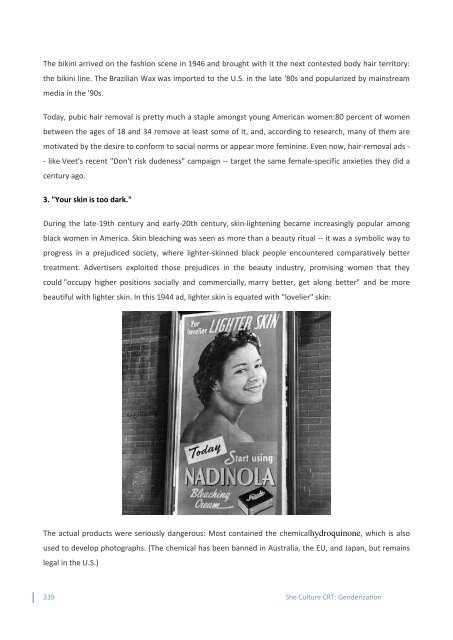7.Genderization
7.Genderization
7.Genderization
You also want an ePaper? Increase the reach of your titles
YUMPU automatically turns print PDFs into web optimized ePapers that Google loves.
The bikini arrived on the fashion scene in 1946 and brought with it the next contested body hair territory:the bikini line. The Brazilian Wax was imported to the U.S. in the late '80s and popularized by mainstreammedia in the '90s.Today, pubic hair removal is pretty much a staple amongst young American women:80 percent of womenbetween the ages of 18 and 34 remove at least some of it, and, according to research, many of them aremotivated by the desire to conform to social norms or appear more feminine. Even now, hair-removal ads -- like Veet's recent "Don't risk dudeness" campaign -- target the same female-specific anxieties they did acentury ago.3. "Your skin is too dark."During the late-19th century and early-20th century, skin-lightening became increasingly popular amongblack women in America. Skin bleaching was seen as more than a beauty ritual -- it was a symbolic way toprogress in a prejudiced society, where lighter-skinned black people encountered comparatively bettertreatment. Advertisers exploited those prejudices in the beauty industry, promising women that theycould "occupy higher positions socially and commercially, marry better, get along better" and be morebeautiful with lighter skin. In this 1944 ad, lighter skin is equated with "lovelier" skin:The actual products were seriously dangerous: Most contained the chemicalhydroquinone, which is alsoused to develop photographs. (The chemical has been banned in Australia, the EU, and Japan, but remainslegal in the U.S.)339 She Culture CRT: Genderization



